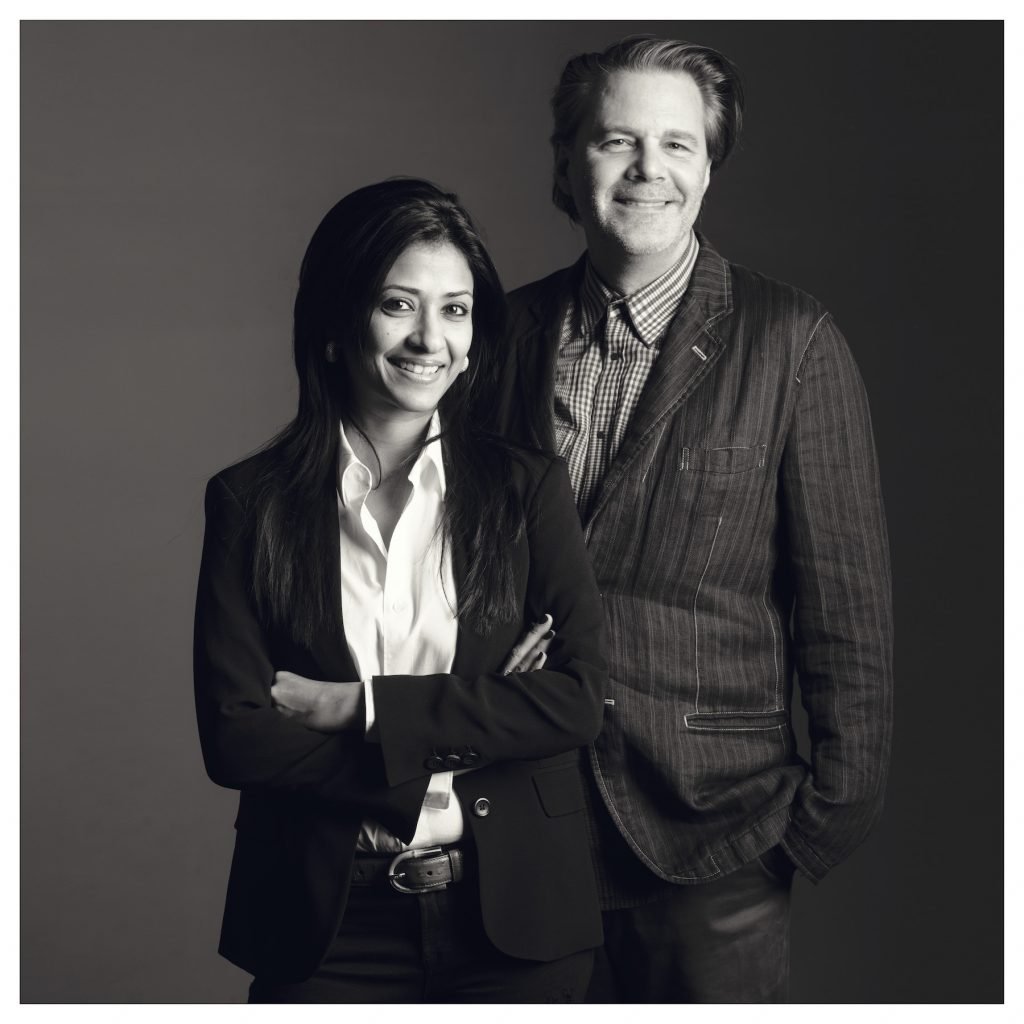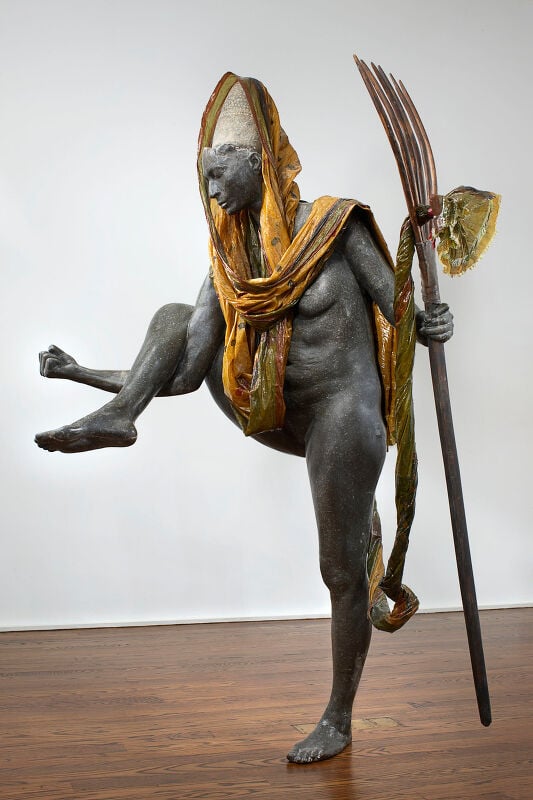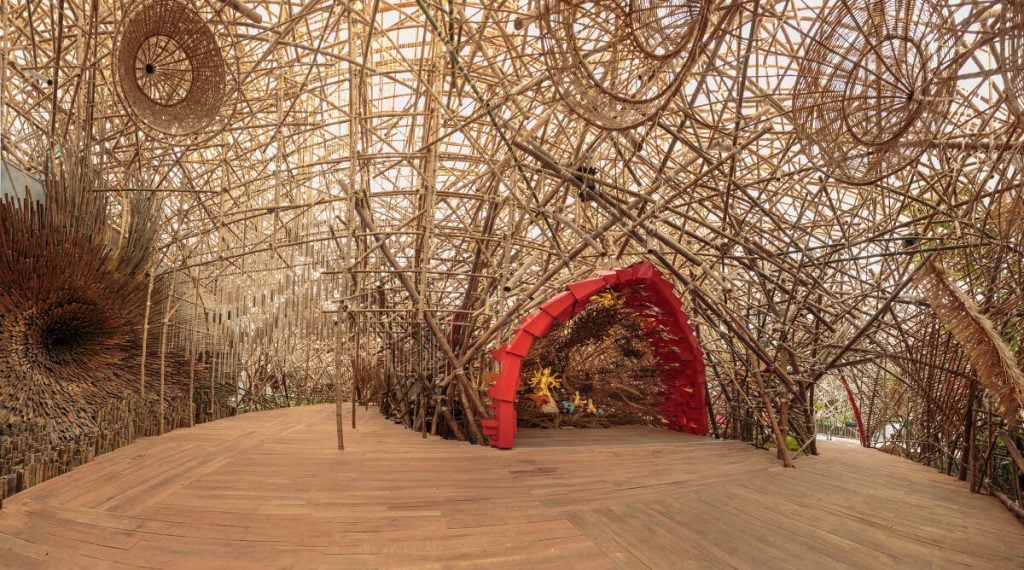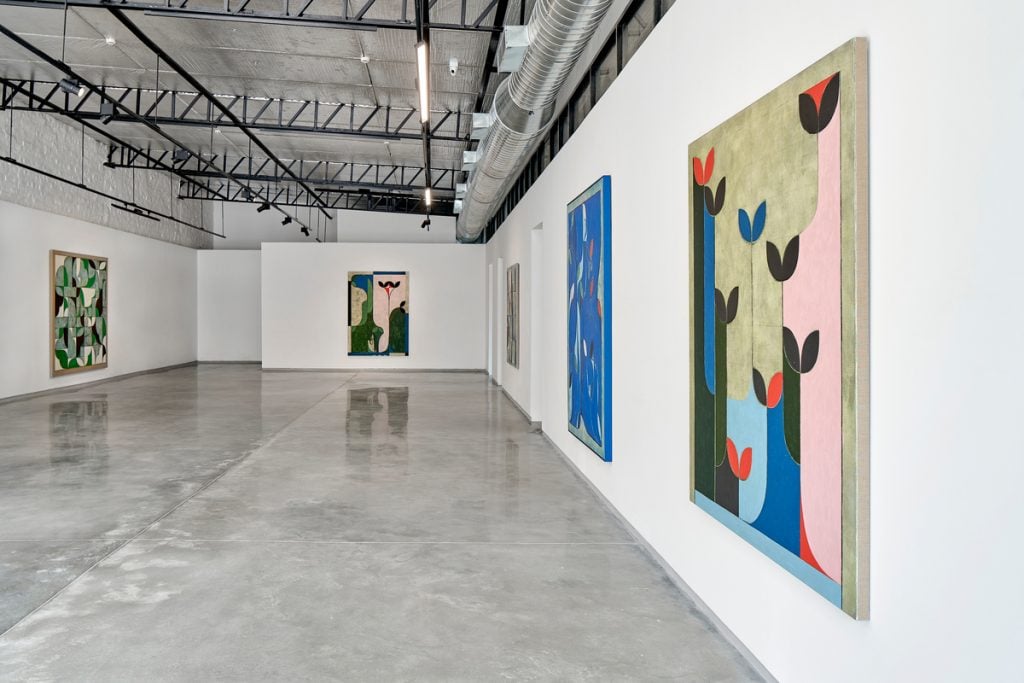Gallery Network
As Nature Morte Gallery Celebrates 25 Years in India, We Caught Up With the Dealer and Artist Behind Its Trailblazing Success
We spoke with Peter Nagy, who founded the gallery in New York's East Village in 1982.

We spoke with Peter Nagy, who founded the gallery in New York's East Village in 1982.

Artnet Gallery Network

A gallery reaching its 25th anniversary is an achievement anywhere in the world—but for those galleries outside of longstanding art centers like New York, London, and Hong Kong, it’s an even more exceptional feat.
Nature Morte Gallery is marking just such an anniversary in Delhi—a true testament to the gallery’s commitment to its adopted home in India. Founded by Peter Nagy in New York’s East Village in 1982, Nature Morte had a six-year run before the artist and dealer decided to close up the gallery and leave the city. Then, in 1997, now living in Delhi, Nagy revived Nature Morte as a commercial gallery and curatorial experiment in the bustling metropolis.

Bharti Kher, The Messanger (2012). Courtesy of Nature Morte.
In the 25 years since, the gallery has established itself as a pillar of contemporary art in the city and one of the few venues for experimental and conceptual art in all of India. Today, the gallery encompasses two exhibition spaces. The main gallery is located at the Dhan Mill complex in the Chattarpur area to the south, while a secondary gallery, in the neighborhood of Vasant Vihar, operates as a venue for smaller shows. During these years, the gallery also experimented with two outposts, one in Berlin (2008–14) another in Calcutta (2010–13).
Today Nagy operates the gallery with co-director and co-owner Aparajita Jain. Nature Morte represents some of the most internationally recognized Indian contemporary artists, including Jitish Kallat, Bharti Kher, Reena Saini Kallat, and Asim Waqif. Recently we caught up with Nagy to take the temperature of the city’s art scene.
What do you see as the relationship between Nature Morte and the city of Delhi?
I chose to come live in India in the early 1990s, but Delhi was by chance. I knew a man who had family here who provided me some access, as I knew not a single soul in the subcontinent. Being a New Yorker, I never had the desire to live in Mumbai (Bombay), as I wanted to move to a very different type of city—not another one where I had to pay too much for a tiny apartment. And Mumbai, in many ways, has only become more and more like New York in the past three decades.
But in the mid-1990s, people who knew something of Nature Morte and my taste in art encouraged me to open in Mumbai. Certainly, it would have been successful much more quickly for, at that point, Mumbai was very much the city for progressive contemporary art in India and there was very little happening in Delhi. But Delhi was more spread out (imagine Los Angeles crossed with Washington, D.C.), rents were cheaper, and, lucky for me, I quickly fell in with a generation of young artists living in Delhi who were making work that I found to be compelling (some of whom had galleries to show with in Mumbai, but not in Delhi). So there was much more opportunity for me in Delhi, but back then it was still very much the city of government and officialdom, and its cultural life reflected that persona.
Things have changed immensely in the past 30 years, and now there is just as much—perhaps a tad more?—interesting contemporary art to be found in Delhi, compared with Mumbai. Because it is the capital, the embassies and international press are here, and as India has become more important to geopolitics, it is no longer a “hardship posting” and has attracted more intellectuals and creative types in general. Delhi also has massive universities, which affect the flavor and politics of the city, and, unlike any other Indian metropolis, it is a melting pot of communities from all over the subcontinent, bringing with them their various cultural constructs. The government-run museums (for both traditional and contemporary arts) ebb and flow according to leadership, but with the establishment of the Kiran Nadar Museum of Art, now in its 12th year, the city has a private museum of international caliber in terms of both exhibitions and acquisitions. The creation of the India Art Fair in 2008 contributed to the city’s profile as a center for contemporary art.
I like to think that Nature Morte, as a commercial gallery that saw the potential for new art forms, as well as the potential for young Indian artists outside of India, played some part in all of this. But all I really did was bring the New York model of the art gallery to India, much as Pierre Matisse, Ileana Sonnabend, and Leo Castelli brought the European model to New York before I was born.

Asim Waqif, Loy (2019). Installation image Durga Puja Pandal commissioned by Arjunpur Amra Sabai Club, Kolkata.
How would you define India’s position—and market—in the global art world today?
We saw a huge amount of growth in the Indian contemporary art world in the first decade of the 21st century. This was fueled by multiple factors: the interest of the Western art world in non-Western contemporary art (and accommodating it into art fairs and biennials); the rise of the internet; a generation of artists coming of age and starting to travel outside of India and wanting to create similar contexts back home; a general boom in the Indian economy, which led to a view of art as an investment asset.
This growth started to level off around 2010 and we’ve been on that plateau since, with very little expansion to the serious contemporary—that is to say, art that is challenging and intelligent—scene, and even an unfortunate scaling back of adventurous commercial spaces. At present, there are two major pitfalls in the art ecosystem of India. First, the art education system is dismal and needs a complete overhaul. Higher education in the design fields is much better, and we are seeing many of India’s more interesting cultural practitioners come out of the fields of design, fashion, film, and architecture. Second, the country desperately needs more commercial galleries in more cities other than Delhi and Mumbai (though more there will also be welcomed). I mean commercial galleries that are started and run by young people with an education in art—not just housewives who see paintings as an extension of interior design, which we have plenty of—who will take on young artists and support them for the long haul, developing their careers and markets over time. The talent exists and there are many young artists who have nowhere to show their works, let alone sell them and have them promoted intelligently. I don’t think we’re going to see any big spurt in activity for at least another ten years. India basically has the contemporary art scene that it needs and can currently support. Ultimately, a society supports the culture that it has a psychological need for.
Like much of the rest of the world, India is seeing a rise in right-wing nationalism, but it’s also a period of inward searching for the nation. What are the effects on the Indian art world?
“Political art” or even what we would call “institutional critique” is almost nonexistent in India. These forms of address started to develop, a bit, in the early 2000s, but as there are almost no venues that exhibit such art, there are scant possibilities for them to be seen, much less develop. With the continuing strength of a right-wing government, journalism, press freedoms, and civil rights are being increasingly curtailed. This atmosphere has completely frozen any forms of oppositional or critical art practices. Where they do exist, their messages are so submerged that the messages are only legible to a very small cognoscenti, and are designed as such. We do see right-wing elements attacking leftist art and culture for perceived insults to the dominant ideologies and, unfortunately, artists censoring themselves as a result.
Do you see outside interest in Indian art emerging beyond the nation’s borders? If so, is that a good or bad thing?
As I’m sure you are aware, the major “ism” of the 21st century has been globalism. The globalization of the contemporary art world, led by the engines of the West, started in the late 1990s with China. At the beginning of the 2000s, we saw a huge stream of art professionals (curators, advisors, dealers) come to India from China. “India is the new China” was the rallying call on their lips as they stormed the gates. They found what they were looking for: intelligent forms of contemporary art that were rooted in their local vernaculars and histories but participating in international discourses. And in many cases, it was an easier fit, since English is the lingua franca of the Indian contemporary art world—and one of the reasons I settled here. A generation of Indian artists (many of whom I work with) were maturing at this time and benefitted greatly from this international attention, such as Dayanita Singh, Subodh Gupta, Bharti Kher, Jitish Kallat, Shilpa Gupta, Raqs Media Collective, Amar Kanwar, N.S Harsha, and Thukral & Tagra.
But, as with all trends, this too passed, and the globalist avant-garde art market decamped for the Middle East, then South America, and today can be found in Africa. Both good and bad can be found, depending on whom you talk to and how they have been affected. For myself and my gallery, it was no surprise that I, the guy from New York, would be interested in Indian artists who would also be of interest to the Western art world. Today, there is scant interest from Europe and other parts of Asia, a bit more from the United States, as many institutions there consciously admit that they “paid too much attention to China.”

Installation view of “Kamrooz Aram” at Nature Morte, Delhi.
Where do most of your collectors come from? How do you reach new collectors and how do you draw in interest from beyond a set pool?
I will never forget an encounter that occurred when we were participating in Art Basel Miami Beach for the second time. An over-tanned matron stopped dead in the track of her cha-cha mules, looked up at the signboard of our booth, looked at me, and shrieked: “A gallery from India? Who do you sell art to in India?” My response, “Rich Indians,” elicited her next shriek of surprise: “You have rich people in India?!”
Today, I would say 90% of our sales are to collectors living in India, with a generalized 60–40 split between Mumbai and Delhi. Mumbai has always had more adventurous collectors, and much of the work we show appeals more to them than to the collectors of Delhi. There is a very scant clientele for us in other cities, but this is something that will certainly grow.
My business partner, Aparajita Jain, handles most of the sales and outreach with her team, leaving me free to work with the artists on our exhibitions and related content development. She grew up in a prominent business family in Mumbai and then married into another in Delhi, so her social circle is very large and diverse. Her energy to persuade people to support more challenging art forms knows no bounds!
India is a complicated and difficult place to live—for everyone, regardless of their social level—so most people are not actually going out of their way to be challenged by art. Most want art that is comforting, pleasing, and decorative. So the market, and even the exhibition contexts, for experimental art is very small, in relation to the size of the population and in comparison with contexts like New York and Paris. What gets the lion’s share of publicity inside of India is art that recycles Hindu icons and mythologies into hyper-decorative scenarios. We don’t show this type of art at Nature Morte; hence, most find our exhibitions to be opaque and unpleasant. Of course, the cognoscenti feels differently!
How are you marking the 25th anniversary of the gallery in Delhi?
We thought about doing a show in Mumbai (where we do a large pop-up exhibition once a year, usually a solo show), but it just seems impossible to represent the history of the gallery in a single show without hurting some peoples’ feelings and figuring out how it pays for itself. It’s something a museum will have to do somewhere in the future. So we are compiling a book that documents everything, including the shows at the galleries in Berlin and Calcutta. Perhaps that will be ready for our 30th anniversary!